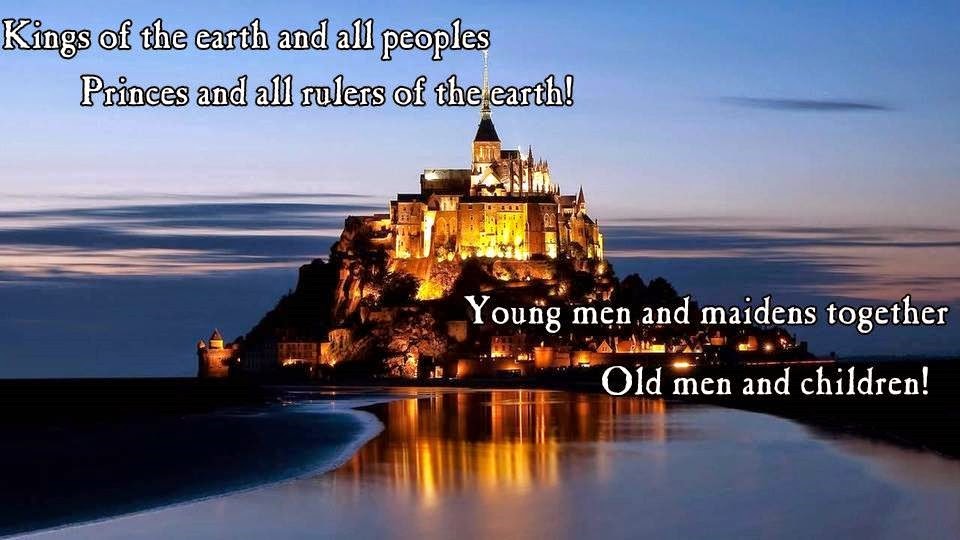Isaiah 49:10-12
10 They will neither hunger nor thirst,
nor will the desert heat or the sun beat down on them.
He who has compassion on them will guide them
and lead them beside springs of water.
11 I will turn all my mountains into roads,
and my highways will be raised up.
12 See, they will come from afar—
some from the north, some from the west,
some from the region of Sinim. "
About three decades ago, the Ipuwer looked like this in the museum in Leiden, Holland.
Today, this is not in any Identifying frame, and is mounted on black to show the colors more clearly.
The University of Michigan owns 300 Chapters of The New Testament.
The Collection is called Papyrus 46. (Link)
This is late First or early Second Century. Depending on the scholar looking at verb conjugation. Either way, the Disciple John was alive on Patmos Island. And if you look at the stamped identification on The Book of Hebrews, the author is defined as Paul because the last Chapter of Hebrews has the author traveling with Timothy. We all know the traveling companion for Timothy is Paul. The Book of Hebrews was identified as Paul's Book for 1,900 years.
Until the 1900's, the vintage photos of Israel - say of Nazareth or Nain - the towns all looked as they did from traveler letters going back to the year 400 A.D. The population was pretty steadfast.
Typical Stable of Bethlehem.
Our Honeymoon in 1986, Edward and I went to visit London and a few U.K. cities. We went to a lot of Museums; about Museum 4, we went The British Museum. We wandered around and even got to the Basement - no windows, little cubical type displays. Edward was about 25 feet off.
Now, when you get to the very bottom of The British Museum, you are looking at pillars. Beautiful columns. Things you find in the sand. 'One' gets the idea, 'one' would be very surprised and delighted to have been the discoverer. In fact, the basement has the larger, more intact finds. Even the cubical Basement is interesting.
Salt Papyrus 124
Obscure Pharaoh Seti II of the 19th Dynasty, had an ongoing complaint with his half-brother. Called Amennakht - this led to a famous document called "A Tale of Two Brothers." (Which is Entirely a Different Document than Salt Papyrus 124.) This Papyrus is showing this conflict was so severe, interrupted the reign of Seti II. Seti II died after 6 years of his reign, suddenly. He had children, yet no mention is made of his children. His spouse is set up as the new Pharaoh upon his untimely death. Amennakht is also referred to as "MSY" and Mose. The charges are extremely broad, from ordering his men to do work for his personal benefit to murder.
(Both Ipuwer and Salt Papyrus 124 have variations by different translators.)
"EDWARD, OH MY GOD! COME HERE, I JUST FOUND MOSES IN EGYPT!!!"
I realized that I had just yelled with all my might and whirled around because I knew in the rather tiny cubical I was standing with a Guard in a Dark Blue Suit.
The day before we had been at Windsor Castle and I had caused the guards to all come running. I was seriously interested in the Doll House at Windsor. And in examining all the details had fully smashed my nose coming in full body contact with the glass. We had 6 or 8 upset guards and I was in serious nose pain. Edward had to explain I had built doll houses while I was bent double. They decided, after interrogation, they liked us and we all pointed out things in the Amazing Royal Doll House. We had fun. But they had said I was a "Hootenanny" and the Senior Guard said do not get in further guard attention-getting situations. And he was serious.
After I yelled, I realized yesterday I had been the hootenanny of the Windsor Guards. So I turned fast around to see if it was a repeat and in this obscure part of the British Museum's underground, off to the back corner, in a back cubical of loot, I found out I was the hootenanny again. The Guard asked how I was the hootenanny yesterday at Windsor. He was a man who was a little elderly, with black horn-rimmed Tate style glasses and, rather, slender.
The Guard yelled a bit. "WHAT did you do At Windsor?" I told him about the glass and Doll House. The Guard said, "They did call and said to be on the alert and look for you."
Edward said, "Oh My God."
The Guards eyebrows went up and he asked how many guards we were talking to. We relaxed.
Edward asked where is Moses and I said right here and we looked. It's a very clear Papyrus. Amazingly clear. 1250 B.C. Unbeknownst to us at the time - the same age as the Ipuwer Papyrus telling of all the Plagues and the freak storm and waves at the end.
I turned back and spent about 5 minutes gazing at Moses in Salt Papyrus 124. The Guard said to Edward, "Give her a minute."
And then he said quietly, "What do you think?"
I said I think we just solved the Exodus and all the papyrus and statues the Pharaoh love to tear down.
The Guard said with a very angry face, but the sign says it's not Moses.
And I said, right, it always says that.
And the Guard said,"The Sign didn't say that at the beginning of my employment here about 30 years ago."
Today Salt Papyrus 124 is no longer on view.
Gaze deeply at the photo. Scholars can gain permission to see this Papyrus in amazing shape.
I asked, "Where is Seti II?"
He said, "Well, if you found Moses, maybe you can find Seti II !"
I looked hither and yon in the cubicle.
The Guard said, "I'm pulling your leg, Egypt doesn't let go of Pharaoh that easily."
I replied, "I saw Nefertiti in St Louis."
The Guard said, "You don't say."
I said I really did.
The Guard looked skeptical and said, "No, they haven't found Nefertiti yet."
I said the sign said it was.
He said, "Really they haven't found Nefertiti." And he added, "I tell you what, I bet some museum person was having a joke. When was this?"
1976ish,
The Guard said, "They used to let Pharaoh assistants travel around, but now they know more about atmosphere and deterioration. I bet it was a museum to librarian joke. "Was this a lesser mummy. What did the card look like?"
We decided it must have been a joke. A handwritten card.
The Guard said, "Now what do you think?"
I said, "I think the person who penned this, has seen Moses"
"Oh you mean, someone like Pharaoh's secretary?"
I said, "Maybe, or one of the entire pool of scribes, but this person has seen Moses maybe even growing up and a lot of Moses. Definitely passed him by in the hallway."
I added and said, "I think it's sad - the Author of 5 books of the Bible has an actual piece of paper and it's a scribe."
The Guard stood straighter, said, "I've stood in this cubical for 30 years and years and years by choice and even petitioned when they canceled personal guard in the cubicle room. Why would God allow a scribe to be the one who has the piece of paper?"
I thought about this. And said, "Well, we Don't Know the Scribe Do We."
The Guard said that was a valid point. And he looked angry and said, "Why would God allow this."
And, being 22 years old, I said, with a huge smile, "There is only ONE Dead Sea Scroll Library so far."
The Guard by choice and petition had put his life, his career choice, to guard Papyrus Salt 124. Our Guard said, "I was paid to guard Moses and no one would ever tell me differently."
I said that is getting paid to be a Minister of God without the Theology Degree and he nodded.
And The Guard said he had quite a few emotions about Salt Papyrus 124.
The Guard said he hoped the world would see Salt Papyrus 124 for what we saw.
I said Seti II is so minor.
And he said, "Yes, that was God's point too. That a Museum Guard is important to God too. That is the point of the Exodus. The point God died for each of us. Jesus Christ Lives. Moses is a debated piece of paper. The difference between gifted of God and GOD.

Salt Papyrus 124 Up Close - Very Clear
British Museum EA 10055
Late 19th dynasty, c. 1200 BC
From Deir el-Medina
The papyrus contains the petition of problems of Amennakhte = Mose
Seti II - Wikipedia https://en.wikipedia.org/wiki/Seti_II
"Seti II (or Sethos II), ... Evidently this 'Mose' must have been a person of the highest importance, perhaps the king Amenmesse himself or a senior ally of the king."
Deir el-Medina
Deir el-Medina (Arabic: دير المدينة) is an ancient Egyptian village which was home to the artisans who worked on the tombs in the Valley of the Kings during the 18th to 20th dynasties. The settlement's ancient name was "Set Maat" (translated as "The Place of Truth")
http://www.britishmuseum.org/research/collection_online/collection_object_details.aspx?objectId=100909&partId=1&museumno=10055&page=1
Perhaps another Museum would acquire this Papyrus and Display it again.
http://www.deirelmedina.com/lenka/BM2.html
The Talmud was at times propaganda. This is the anti-propaganda of Mose.
History should not be locked away for the philosophies of a few. History is meant to be a journey of discovery, wonder and awe. And this is the way History should be Displayed. If you feel this is true, please write
The British Museum
Salt Papyrus 124 Mose, Seti II - For Display
friends@britishmuseum.org
Great Russell Street, London WC1B 3DG1
Museums and Knowledge should fill us all with a sense of Wonder and Discovery. All of Life is a Journey, Discovery and Destination.
We will pray for this!!!
Abba,
In the Name of the Father, Jesus Christ Your Son, and the Holy Spirit.
Cover us, cover those we Love. Save the world in Jesus Christ.
Swing Low, Sweet Chariot. Carry us Home.
Children of the Hope and Promise of Jesus Christ Risen. Amen.
♔ Lord Jesus Saves! †




































































































